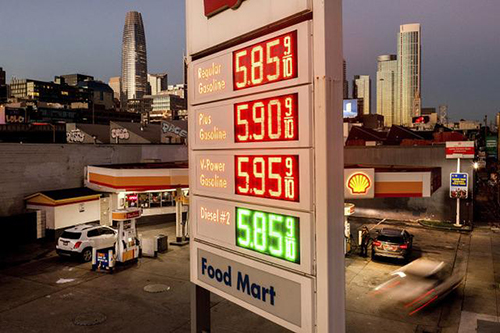Introduction to the Internal Structure of Fuel Dispensers
A fuel dispenser, also known as a fuel distributor, air pump, or gasoline pump, is a critical equipment used in gas stations to provide fuel for vehicles such as cars and trucks. Its internal structure is complex and precise, and its main components include the following key parts:

1. Oil pump
Function: Responsible for extracting fuel from underground storage tanks to refueling machines.
Types: Common types of oil pumps include centrifugal pumps, gear pumps, and plunger pumps. These oil pumps need to have sufficient flow and head to meet the refueling needs of various vehicles.
Characteristics: The design of the oil pump directly affects the refueling efficiency and stability of the fuel dispenser.
2. Flow meter
Function: The Flow meter is one of the key components in a fuel dispenser, used to measure the amount of fuel passing through the dispenser.
Type: Flow meters typically adopt plunger or turbine designs, which can accurately measure fuel flow and ensure that the amount paid by customers matches the amount of fuel added.
Importance: The accuracy and stability of flow meters are directly related to the measurement accuracy of fuel dispensers and customer satisfaction.
3. Meter
Function: The gauge is one of the core components of the fuel dispenser, used to display the quantity and amount of fuel added by customers.
Type: The meter can be mechanical or electronic. Modern fuel dispensers typically use digital displays to provide more accurate readings and a better user experience.
Features: Electronic meters are usually connected to electronic control systems and can achieve more advanced functions such as remote monitoring and data transmission.
4. Oil and gas separator
Function: The oil-gas separator is used to separate gases and impurities from fuel to ensure the purity and safety of refueling.
Characteristics: The design of the oil-gas separator needs to consider the characteristics of the fuel and the operating environment of the refueling machine to ensure its effectiveness and durability.
5. Control valve and encoder
Function: The control valve is used to control the direction and flow rate of fuel, while the encoder is used to convert the mechanical signal converted by the flow measurement converter into an electronic signal.
Characteristics: The accuracy and reliability of these components are crucial for the normal operation of the fuel dispenser.
6. Indicator screen and operation panel
Function: The indicator screen is used to display information such as fuel volume and amount, while the operation panel is used to control various functions of the fuel dispenser.
Features: The indicator screen of modern fuel dispensers usually adopts high-definition display screens, and the operation panel is equipped with various control buttons and display screens to achieve more convenient operation and richer functions.
7. Spray gun and oil pipeline
Function: The spray gun is located at the end of the fuel delivery pipe and can manually or automatically control the fuel injection. The fuel pipeline is used to transport fuel from the refueling machine to the vehicle's fuel tank.
Features: Spray guns are usually equipped with safety valves to prevent fuel spillage and leakage. Oil pipelines need to have sufficient pressure resistance and corrosion resistance to ensure the smooth transportation of fuel.
8. Electronic control system and communication module
Function: The electronic control system is used to achieve automation and intelligent control of the fuel dispenser, while the communication module is used to achieve remote monitoring and data transmission.
Characteristics: These systems require close coordination with other components of the refueling machine to achieve efficient and accurate refueling services.
9. Security system
Composition: including multiple aspects such as fire prevention, explosion prevention, and leakage protection. The design and configuration of these security systems must comply with relevant national and regional security standards.
Importance: The safety system is an important guarantee for ensuring the safety of the refueling process and is of great significance in preventing accidents such as fires and explosions.
In summary, the internal structure of a fuel dispenser is a complex and precise system, with various components working together to achieve precise fuel measurement and safe refueling. Understanding the internal structure of fuel dispensers helps us better use and maintain them, ensuring their normal operation and long-term stability.
Wenzhou Jiahao Petroleum Machinery Co, Ltd is a professional manufacturer of petroleum machinery products since 2010. The main products are Fuel dispenser components including Automatic Fuel nozzle, Adblue DEF Nozzle, Vapor Recovery Nozzle, Flowmeter and Fuel pumps.





